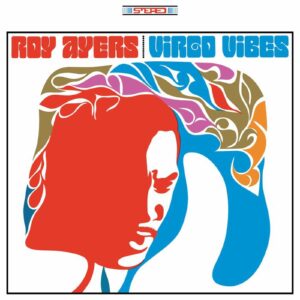In the vast realm of soul and jazz music, few artists have left as indelible a mark as Roy Ayers. With his unparalleled talent for blending smooth grooves and soulful vibes, Ayers created a musical legacy that continues to captivate listeners even today. As we delve into the early albums of this musical virtuoso, we uncover the foundations of his iconic sound and witness the birth of a true legend.
Roy Ayers’ Early Albums
Ayers’ first album, “West Coast Vibes,” released in 1963, immediately announced his arrival as a force to be reckoned with. The album showcased Ayers’ exceptional skills on the vibraphone, intertwining lush melodies with intricate improvisation. Tracks like “Budo” and “Well, You Needn’t” showcased his technical prowess, while the introspective “Little Karen” demonstrated his ability to evoke deep emotions through his music. “West Coast Vibes” provided a glimpse of Ayers’ potential and set the stage for his future artistic endeavours.
It was Ayers’ sophomore album, “Virgo Vibes,” released in 1967, that truly began to define his signature sound. Embracing a more soulful and funky direction, Ayers seamlessly merged jazz elements with R&B influences. The title track, “Virgo Vibes,” was a prime example of this fusion, with its infectious groove and Ayers’ vibrant vibraphone melodies. The album also featured the captivating “Lil’s Paradise,” which showcased Ayers’ soothing vocals and established his versatility as a musician. “Virgo Vibes” marked a turning point in Ayers’ career, propelling him into the spotlight and solidifying his status as a musical trailblazer.

Roy Ayers -Ubiquity
As the 1970s dawned, Ayers continued to refine his sound and push musical boundaries. His third album, “Ubiquity,” released in 1970, exemplified his evolution as an artist. Fusing elements of jazz, funk, and soul, Ayers delivered a collection of tracks that exuded both sophistication and a captivating energy. The opening track, “Pretty Brown Skin,” set the tone with its irresistible groove, while “Vibrations” showcased Ayers’ ability to craft infectious hooks. However, it was the iconic “Everybody Loves the Sunshine” that became Ayers’ breakthrough hit, solidifying his status as a pioneer of jazz-funk fusion.
The subsequent albums, including “He’s Coming” (1971) and “Red, Black & Green” (1973), further solidified Ayers’ reputation as a groundbreaking artist. These records continued to explore the realms of jazz-funk, with Ayers weaving together rich harmonies, infectious rhythms, and socially conscious lyrics. Tracks like “We Live in Brooklyn, Baby” and “Coffy Is the Color” showcased Ayers’ ability to infuse his music with a profound social message, capturing the essence of the era’s cultural and political climate.
Roy Ayers’ early albums laid the foundation for his enduring musical legacy. They showcased his virtuosity on the vibraphone, his soulful vocals, and his ability to seamlessly blend jazz, funk, and soul into a distinctive sound that transcended genres. Ayers’ music has influenced generations of DJ’s, producers and musicians from hip hop, disco, house and soul. It’s hard to think of an artist that has so much influence on so many wide-ranging music genres. At the age of 82 he continues to delight new generations of fans and may long it continue.
